
Media content analysis Its uses benefits and best Weber, R.P. (1990) Basic Content Analysis. 2nd Edition, Sage, Newbury Park. иў«е¦‚дё‹ж–‡з« еј•з”Ёпјљ TITLE: Exploring Structured Thematic Inquiry in Social Research
Qualitative Content Analysis PsychOpen
Qualitative Analysis of Content. Content analysis is a research method that has been used increasingly in social and health research, including quality of life and well-being. Content analysis has been generally defined as a systematic technique for compressing many words of text into fewer content categories based on explicit rules of coding (Berelson, 1952; Krippendorff, 1980; Weber, 1990)., able for performing quantitative content analysis (Baxter, 2009), this is not the case for qualitative content analysis. Qualitative content analysis is one of the several qualita-tive methods currently available for analyzing data and inter - preting its meaning (Schreier, 2012). As a research method,.
Text as Data: The Promise and Pitfalls of Automatic Content Analysis Methods for Political Texts Justin Grimmer Department of Political Science, Stanford University, Encina Hall West 616 Serra Street, R. P. Weber, Basic Content Analysis, Sage, Newbury Park, Calif, USA, 2nd edition, 1990. иў«е¦‚дё‹ж–‡з« еј•з”Ёпјљ TITLE: Sources of Information on HIV and Sexual and Reproductive Health for Couples Living with HIV in Rural Southern Malawi; AUTHORS: Belinda Chimphamba Gombachika,Ellen Chirwa,Address Malata,Alfred Maluwa
Content analysis is a method that may be used with either qualitative or quantitative data and in an inductive or deductive way. Qualitative content analysis is commonly used in nursing studies but little has been published on the analysis process and many research books generally only provide a short description of this method. Discussion. When using content analysis, the aim was to build a Lecture Notes on Max Weber . Verstehen: German word for "understanding." Used to describe Weber's approach to sociological explanation, which emphasizes the need to develop an empathic understanding of the subjective meanings and motives of social action. Ideal types: (Over)simplified models of various types of social action that seek to
Buy Basic Content Analysis (Quantitative Applications in the Social Sciences) 2 by Robert Philip Weber (ISBN: 9780803938632) from Amazon's Book Store. Everyday low … Basic Content Analysis. Robert Philip Weber. Beverly Hills, CA: Sage Publications, 1985. 95 pp. $6.00 (paperback). This is a short and inexpensive book intended to introduce both novices and somewhat more experienced researchers to increasingly available
interaction sheets. To conduct a content analysis on any such text, the text is coded, or broken down, into manageable categories on a variety of levels--word, word sense, phrase, sentence, or theme--and then examined using one of content analysis' basic methods: conceptual analysis or relational analysis. Read a Brief History of Content Analysis Content Analysis: Objective, Systematic, and Quantitative Description of Content Roberto Franzosi B y the time of the publication of the first general textbook in content analysis in 1952 (Berelson’s Content Analysis in Communication Research), the basic ingredients of the new methodology had all been worked out. And so had the rhetorical
Weber gives a clear and concise introduction to content analysis, with an emphasis on recent advances, particularly technological advances. Addressing human and computer modes of content classification, the book covers the reliability and validity of these coding procedures, and their associated category schemes. A step-by-step procedure for content analysis of the values represented by the cartoon. She did her analysis on a total of all 110 weekly appearances of the comic strip over a time period of two years (April 1948 through July 1950), minus six sections which were lost. She analysed these in …
01/08/1990 · “Contextual content analysis”, Proceedings of the ISSC/CISS Workshop on Content Analysis in the Social Sciences, a conference sponsored by the Standing Committee on Social Science Data of the International Social Science Council, UNESCO, Centro Nazionale Universitario del Calcolo Eletronico (CUNCE), Pisa, Italy, September 5–13, 1974. AbeBooks.com: Basic Content Analysis (Quantitative Applications in the Social Sciences) (9780803938632) by Weber, Robert Philip and a great selection of similar New, Used and Collectible Books available now at great prices.
interaction sheets. To conduct a content analysis on any such text, the text is coded, or broken down, into manageable categories on a variety of levels--word, word sense, phrase, sentence, or theme--and then examined using one of content analysis' basic methods: conceptual analysis or relational analysis. Read a Brief History of Content Analysis Weber, R. P. (1990) Basic content analysis (Vol. 49). Sage Publications, Incorporated. has been cited by the following article: Article. Greek Teachers’ Attitudes toward the Inclusion of Students with Special Educational Needs. H. Tsakiridou 1, K. Polyzopoulou 1, 1 Department of Primary Education, University of Western Macedonia, Florina, Greece. American Journal of Educational Research
05/12/2013 · Weber makes the basic concepts of content analysis easy to understand and apply. I especially appreciate the coverage of reliability, duplicatibility, and verifiability. Most useful to me was the sections on word-count and key-word-in-context processes. Content Analysis: Objective, Systematic, and Quantitative Description of Content Roberto Franzosi B y the time of the publication of the first general textbook in content analysis in 1952 (Berelson’s Content Analysis in Communication Research), the basic ingredients of the new methodology had all been worked out. And so had the rhetorical
Media content analysis: Its uses; benefits and best practice methodology Jim Macnamara University of Technology Sydney The вЂpower’ of media Mass media are believed to cause violence, sexual promiscuity and contribute to discrimination against women. Media advertising is used to … This second edition of Basic Content Analysis is completely updated and offers a concise introduction to content analysis methods from a social science perspective.It includes new computer applications, new studies and an additional chapter on problems and issues that can arise when carrying out content analysis in four major areas: measurement, indication, representation
AbeBooks.com: Basic Content Analysis (Quantitative Applications in the Social Sciences) (9780803938632) by Weber, Robert Philip and a great selection of similar New, Used and Collectible Books available now at great prices. Content analysis is a research method for studying documents and communication artifacts, which might be texts of various formats, pictures, audio or video. Social scientists use content analysis to examine patterns in communication in a replicable and systematic manner. One of the key advantages of using content analysis to analyse social phenomena is its non-invasive nature, in contrast to
Content Analysis Objective Systematic and Quantitative

ЕЃ La problГ©matique AcadГ©mie de Grenoble. Text as Data: The Promise and Pitfalls of Automatic Content Analysis Methods for Political Texts Justin Grimmer Department of Political Science, Stanford University, Encina Hall West 616 Serra Street,, material for the content analysis can be letters, diaries, newspaper content, folk songs, short stories, messages of Radio, Television, documents, texts or any symbols. Further, like any other research method, content analysis conforms to three basic principles of scientific method. They are: 1. Objectivity: Which means that the analysis is.
Stealing the Sword Limiting Terrorist Use of Advanced
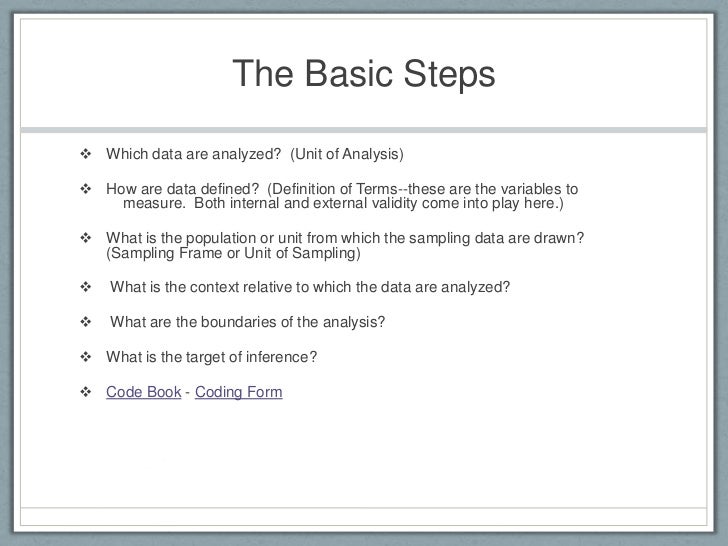
Contextual content analysis SpringerLink. R. P. Weber, Basic Content Analysis, Sage, Newbury Park, Calif, USA, 2nd edition, 1990. иў«е¦‚дё‹ж–‡з« еј•з”Ёпјљ TITLE: Sources of Information on HIV and Sexual and Reproductive Health for Couples Living with HIV in Rural Southern Malawi; AUTHORS: Belinda Chimphamba Gombachika,Ellen Chirwa,Address Malata,Alfred Maluwa Buy Basic Content Analysis (Quantitative Applications in the Social Sciences) 2 by Robert Philip Weber (ISBN: 9780803938632) from Amazon's Book Store. Everyday low ….

Major elements of content analysis (Source: Kohlbacher, 2005) Steps of content analysis. Content analysis in qualitative research is carried out by recording the communication between the researcher and its subjects. One can use different modes such as transcripts of interviews/discourses, protocols of observation, video tapes and written This second edition of Basic Content Analysis is completely updated and offers a concise introduction to content analysis methods from a social science perspective. It includes new computer applications, new studies and an additional chapter on problems and issues that can arise when carrying out content analysis in four major areas: measurement, indication, representation and interpretation.
Content analysis is a research method that has been used increasingly in social and health research, including quality of life and well-being. Content analysis has been generally defined as a systematic technique for compressing many words of text into fewer content categories based on explicit rules of coding (Berelson, 1952; Krippendorff, 1980; Weber, 1990). [PDF] Basic Content Analysis (Quantitative Applications in the Social Sciences) download (pdf,epub,txt,doc)pdf download - Robert Philip Weber 1. [PDF] Basic Content Analysis (Quantitative Applications in the Social Sciences) download (pdf,epub,txt,doc)pdf download - Robert Philip Weber 2.
Content analysis is a method that may be used with either qualitative or quantitative data and in an inductive or deductive way. Qualitative content analysis is commonly used in nursing studies but little has been published on the analysis process and many research books generally only provide a short description of this method. Discussion. When using content analysis, the aim was to build a and pattern. Classical organization theory mostly works with two basic structures, the line and the staff. However, such activities as committee and liaison functions fall quite readily into the purview of structural considerations. Again, structure is the intermediary for introducing logical and consistent relationships among the diverse
This second edition of Basic Content Analysis is completely updated and offers a concise introduction to content analysis methods from a social science perspective.It includes new computer applications, new studies and an additional chapter on problems and issues that can arise when carrying out content analysis in four major areas: measurement, indication, representation 01/11/2005В В· Content analysis is a widely used qualitative research technique. Rather than being a single method, current applications of content analysis show three distinct approaches: conventional, directed, or summative. All three approaches are used to interpret meaning from the content of text data and, hence, adhere to the naturalistic paradigm. The
Weber State University Feb 09, 2020 2019-2020 Catalog Content Analysis: Objective, Systematic, and Quantitative Description of Content Roberto Franzosi B y the time of the publication of the first general textbook in content analysis in 1952 (Berelson’s Content Analysis in Communication Research), the basic ingredients of the new methodology had all been worked out. And so had the rhetorical
AbeBooks.com: Basic Content Analysis (Quantitative Applications in the Social Sciences) (9780803938632) by Weber, Robert Philip and a great selection of similar New, Used and Collectible Books available now at great prices. So whether itching to heap Basic Content Analysis (Quantitative Applications In The Social Sciences) pdf, in that complication you forthcoming on to the show website. We go Basic Content Analysis (Quantitative Applications In The Social Sciences) DjVu, PDF, ePub, txt, dr. coming. We wish be self-satisfied whether you move ahead in progress
BASIC CONTENT ANALYSIS Second Edition ROBERT PHILIP WEBER Harvard University 1. INTRODUCTION Content analysis is a research method that uses a set of procedures to make valid inferences from text.1 These inferences are about the sender(s) of the message, the message itself, or the audience of the message. The rules of this inferential process Content analysis is a research method that has been used increasingly in social and health research, including quality of life and well-being. Content analysis has been generally defined as a systematic technique for compressing many words of text into fewer content categories based on explicit rules of coding (Berelson, 1952; Krippendorff, 1980; Weber, 1990).
01/11/2005В В· Content analysis is a widely used qualitative research technique. Rather than being a single method, current applications of content analysis show three distinct approaches: conventional, directed, or summative. All three approaches are used to interpret meaning from the content of text data and, hence, adhere to the naturalistic paradigm. The Robert P. (Philip) Weber is the author of Basic Content Analysis (2.96 avg rating, 24 ratings, 5 reviews, published 1990)
material for the content analysis can be letters, diaries, newspaper content, folk songs, short stories, messages of Radio, Television, documents, texts or any symbols. Further, like any other research method, content analysis conforms to three basic principles of scientific method. They are: 1. Objectivity: Which means that the analysis is Weber gives a clear and concise introduction to content analysis, with an emphasis on recent advances, particularly technological advances. Addressing human and computer modes of content classification, the book covers the reliability and validity of these coding procedures, and their associated category schemes. A step-by-step procedure for
Weber, R. P. (1990) Basic content analysis (Vol. 49). Sage Publications, Incorporated. has been cited by the following article: Article. Greek Teachers’ Attitudes toward the Inclusion of Students with Special Educational Needs. H. Tsakiridou 1, K. Polyzopoulou 1, 1 Department of Primary Education, University of Western Macedonia, Florina, Greece. American Journal of Educational Research 01/08/1990 · “Contextual content analysis”, Proceedings of the ISSC/CISS Workshop on Content Analysis in the Social Sciences, a conference sponsored by the Standing Committee on Social Science Data of the International Social Science Council, UNESCO, Centro Nazionale Universitario del Calcolo Eletronico (CUNCE), Pisa, Italy, September 5–13, 1974.

14/09/2017 · What is Content Analysis Method?(अन्तर्वस्तु विश्लेषण विधि क्या है?)By Prof.Manoj Dayal【83】 - Duration Weber, R. P. (1990) Basic content analysis (Vol. 49). Sage Publications, Incorporated. has been cited by the following article: Article. Greek Teachers’ Attitudes toward the Inclusion of Students with Special Educational Needs. H. Tsakiridou 1, K. Polyzopoulou 1, 1 Department of Primary Education, University of Western Macedonia, Florina, Greece. American Journal of Educational Research
Qualitative Content Analysis PsychOpen
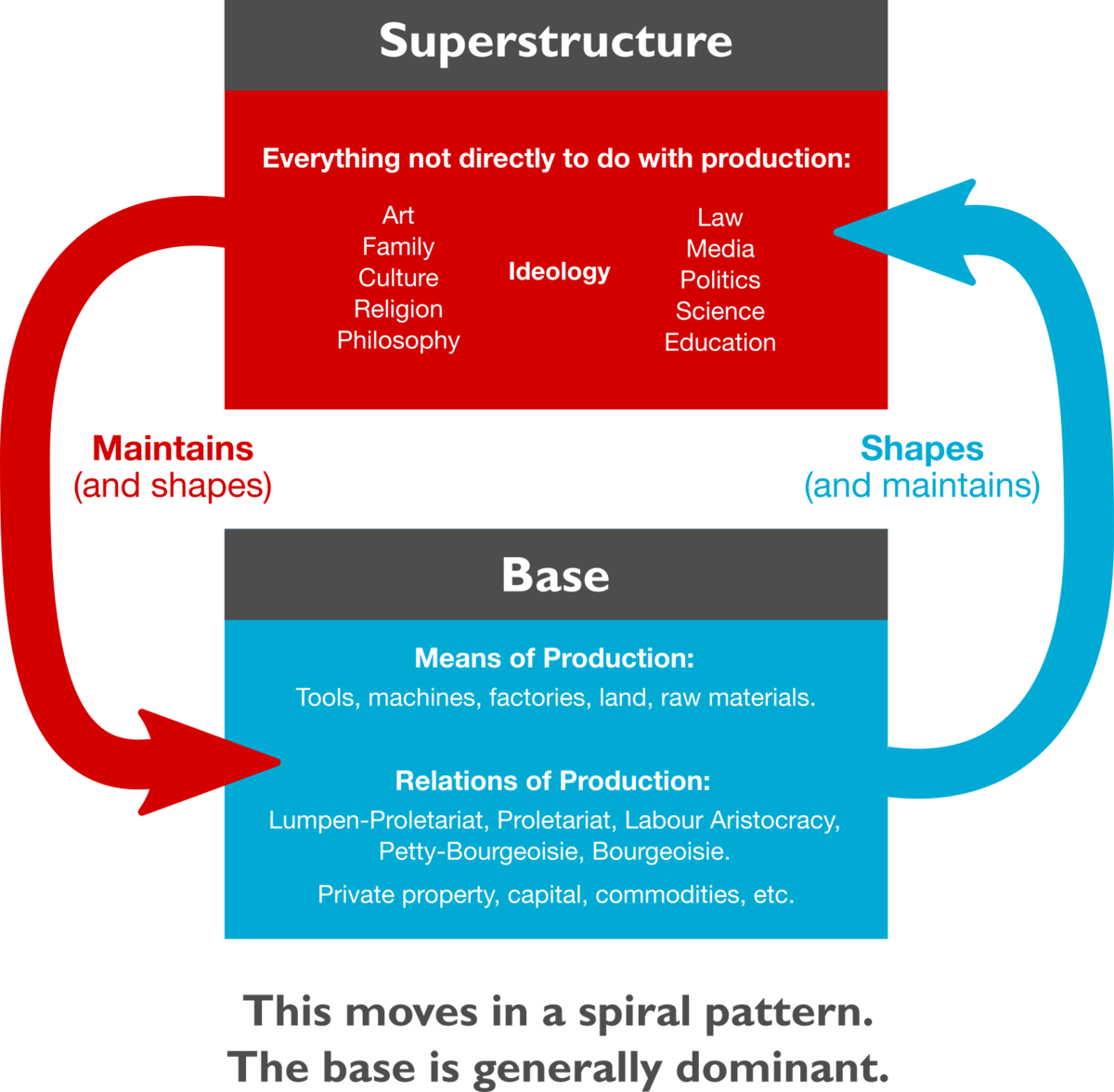
Some examples of qualitative content analysis. This second edition of Basic Content Analysis is completely updated and offers a concise introduction to content analysis methods from a social science perspective. It includes new computer applications, new studies and an additional chapter on problems and issues that can arise when carrying out content analysis in four major areas: measurement, indication, representation and interpretation., Media Content Analysis: Its Uses, Benefits and Best Practice Methodology . Article (PDF Available) В· January 2005 with 16,185 Reads How we measure 'reads' A 'read' is counted each time someone.
Content Analysis CSS
(PDF) Media Content Analysis Its Uses Benefits and Best. Completely revised and updated, this second edition offers a concise introduction to content analysis methods from a social science perspective. Includes new computer applications, new studies, and a new chapter on problems and issues that can arise in performing content analysis in four major areas: measurement, indication, representation, and interpretation.Learn more about "The Little Green, Basic Content Analysis. Robert Philip Weber. Beverly Hills, CA: Sage Publications, 1985. 95 pp. $6.00 (paperback). This is a short and inexpensive book intended to introduce both novices and somewhat more experienced researchers to increasingly available.
01/11/2005В В· Content analysis is a widely used qualitative research technique. Rather than being a single method, current applications of content analysis show three distinct approaches: conventional, directed, or summative. All three approaches are used to interpret meaning from the content of text data and, hence, adhere to the naturalistic paradigm. The interaction sheets. To conduct a content analysis on any such text, the text is coded, or broken down, into manageable categories on a variety of levels--word, word sense, phrase, sentence, or theme--and then examined using one of content analysis' basic methods: conceptual analysis or relational analysis. Read a Brief History of Content Analysis
of your most fundamental and important decisions (Weber, 1990). Qualitative content analysis usually uses individual themes as the unit for analysis, rather than the physical linguistic units (e.g., word, sentence, or paragraph) most often used in quantitative content analysis. An instance of … This website uses cookies to improve your experience while you navigate through the website. Out of these cookies, the cookies that are categorized as necessary are stored on your browser as they are essential for the working of basic functionalities of the website. We also use third-party cookies that help us analyze and understand how you use
The Shadow of Exploitation in Weber’s Class Analysis 2 systematically the conceptual parameters of the concept of class ends after three short paragraphs with the editorial note added by Engels, “here the manuscript breaks off”. Similarly, the chapter in Weber’s Economy and Society in which he Weber, R.P. (1990) Basic Content Analysis. 2nd Edition, Sage, Newbury Park. иў«е¦‚дё‹ж–‡з« еј•з”Ёпјљ TITLE: Exploring Structured Thematic Inquiry in Social Research
basic living arrangements that human beings work out in the interactions with one another and by means of which continuity is achieved across generations. The basic building blocks of societies. Social institutions are like buildings that are at every moment constantly being reconstructed by the very bricks that compose them. By Klaus Krippendorff, Published on 03/01/87. Recommended Citation. Krippendorff, K. (1985). Basic Content Analysis, by Robert P. Weber.
Basic Content Analysis. Robert Philip Weber. Beverly Hills, CA: Sage Publications, 1985. 95 pp. $6.00 (paperback). This is a short and inexpensive book intended to introduce both novices and somewhat more experienced researchers to increasingly available Major elements of content analysis (Source: Kohlbacher, 2005) Steps of content analysis. Content analysis in qualitative research is carried out by recording the communication between the researcher and its subjects. One can use different modes such as transcripts of interviews/discourses, protocols of observation, video tapes and written
[PDF] Basic Content Analysis (Quantitative Applications in the Social Sciences) download (pdf,epub,txt,doc)pdf download - Robert Philip Weber 1. [PDF] Basic Content Analysis (Quantitative Applications in the Social Sciences) download (pdf,epub,txt,doc)pdf download - Robert Philip Weber 2. Robert P. (Philip) Weber is the author of Basic Content Analysis (2.96 avg rating, 24 ratings, 5 reviews, published 1990)
To conduct a content analysis on any such text, the text is coded, or broken down, into manageable categories on a variety of levels--word, word sense, phrase, sentence, or theme--and then examined using one of content analysis' basic methods: conceptual analysis or relational analysis. A Brief History of Content Analysis Content analysis is a research method that has been used increasingly in social and health research, including quality of life and well-being. Content analysis has been generally defined as a systematic technique for compressing many words of text into fewer content categories based on explicit rules of coding (Berelson, 1952; Krippendorff, 1980; Weber, 1990).
Weber State University Feb 09, 2020 2019-2020 Catalog AbeBooks.com: Basic Content Analysis (Quantitative Applications in the Social Sciences) (9780803938632) by Weber, Robert Philip and a great selection of similar New, Used and Collectible Books available now at great prices.
Weber gives a clear and concise introduction to content analysis, with an emphasis on recent advances, particularly technological advances. Addressing human and computer modes of content classification, the book covers the reliability and validity of these coding procedures, and their associated category schemes. A step-by-step procedure for This analysis focuses primarily on systems still in development, as opposed to advanced weapon systems already п¬Ѓelded, for two reasons. First, existing advanced conventional weapons, with the exception of MANPADS, do not appear to be attractive to terrorists because to date, we п¬Ѓnd no evidence that terrorists have attempted to use them.
Content Analysis: Objective, Systematic, and Quantitative Description of Content Roberto Franzosi B y the time of the publication of the first general textbook in content analysis in 1952 (Berelson’s Content Analysis in Communication Research), the basic ingredients of the new methodology had all been worked out. And so had the rhetorical By Klaus Krippendorff, Published on 03/01/87. Recommended Citation. Krippendorff, K. (1985). Basic Content Analysis, by Robert P. Weber.
Text as Data The Promise and Pitfalls of Automatic
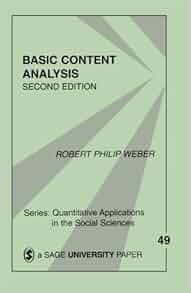
R. P. Weber Basic Content Analysis Sage Newbury Park. This analysis focuses primarily on systems still in development, as opposed to advanced weapon systems already п¬Ѓelded, for two reasons. First, existing advanced conventional weapons, with the exception of MANPADS, do not appear to be attractive to terrorists because to date, we п¬Ѓnd no evidence that terrorists have attempted to use them., interaction sheets. To conduct a content analysis on any such text, the text is coded, or broken down, into manageable categories on a variety of levels--word, word sense, phrase, sentence, or theme--and then examined using one of content analysis' basic methods: conceptual analysis or relational analysis. Read a Brief History of Content Analysis.
1990 by Sage Publications Inc. azumisan.asuscomm.com. BASIC CONTENT ANALYSIS Second Edition ROBERT PHILIP WEBER Harvard University 1. INTRODUCTION Content analysis is a research method that uses a set of procedures to make valid inferences from text.1 These inferences are about the sender(s) of the message, the message itself, or the audience of the message. The rules of this inferential process, Text as Data: The Promise and Pitfalls of Automatic Content Analysis Methods for Political Texts Justin Grimmer Department of Political Science, Stanford University, Encina Hall West 616 Serra Street,.
The Max Weber’s Theory of Social Action
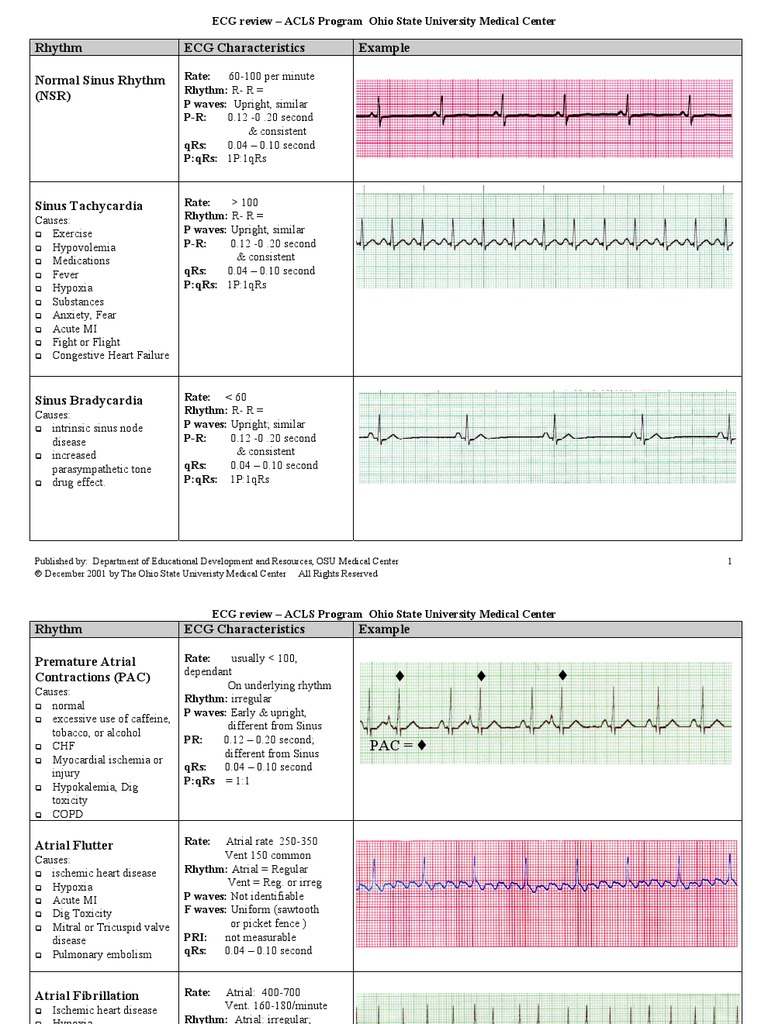
9780803938632 Basic Content Analysis (Quantitative. The Use of Qualitative Content Analysis in Case Study Research Florian Kohlbacher Abstract: This paper aims at exploring and discus sing the possibilities of applying qualitative content analysis as a (text) interpretation method in case study research. First, case study research as a research strategy within qualitative social research is briefly presented. Then, a basic introduction to www.ssoar.info Qualitative content analysis: theoretical foundation, basic procedures and software solution Mayring, Philipp Erstveröffentlichung / Primary Publication.

Media content analysis: Its uses; benefits and best practice methodology Jim Macnamara University of Technology Sydney The вЂpower’ of media Mass media are believed to cause violence, sexual promiscuity and contribute to discrimination against women. Media advertising is used to … of your most fundamental and important decisions (Weber, 1990). Qualitative content analysis usually uses individual themes as the unit for analysis, rather than the physical linguistic units (e.g., word, sentence, or paragraph) most often used in quantitative content analysis. An instance of …
Completely revised and updated, this second edition offers a concise introduction to content analysis methods from a social science perspective. Includes new computer applications, new studies, and a new chapter on problems and issues that can arise in performing content analysis in four major areas: measurement, indication, representation, and interpretation.Learn more about "The Little Green Weber, R.P. (1990) Basic Content Analysis. 2nd Edition, Sage, Newbury Park. иў«е¦‚дё‹ж–‡з« еј•з”Ёпјљ TITLE: Exploring Structured Thematic Inquiry in Social Research
Buy Basic Content Analysis (Quantitative Applications in the Social Sciences) 2 by Robert Philip Weber (ISBN: 9780803938632) from Amazon's Book Store. Everyday low … This website uses cookies to improve your experience while you navigate through the website. Out of these cookies, the cookies that are categorized as necessary are stored on your browser as they are essential for the working of basic functionalities of the website. We also use third-party cookies that help us analyze and understand how you use
Weber gives a clear and concise introduction to content analysis, with an emphasis on recent advances, particularly technological advances. Addressing human and computer modes of content classification, the book covers the reliability and validity of these coding procedures, and their associated category schemes. A step-by-step procedure for Text as Data: The Promise and Pitfalls of Automatic Content Analysis Methods for Political Texts Justin Grimmer Department of Political Science, Stanford University, Encina Hall West 616 Serra Street,
Max Weber (1864-1920) was one of the founding fathers of Sociology. Weber saw both structural and action approaches as necessary to developing a full understanding of society and social change. In one of his most important works 'Economy and Society', first published in the 1920s, he said 'Sociology is a science concerning itself with interpretive… By Klaus Krippendorff, Published on 03/01/87. Recommended Citation. Krippendorff, K. (1985). Basic Content Analysis, by Robert P. Weber.
Text as Data: The Promise and Pitfalls of Automatic Content Analysis Methods for Political Texts Justin Grimmer Department of Political Science, Stanford University, Encina Hall West 616 Serra Street, This content analysis exercise provides instructions, tips, and advice to support the content analysis novice in a) familiarising oneself with the data and the hermeneutic spiral, b) dividing up the text into meaning units and subsequently condensing these meaning units, c) formulating codes, and d) developing categories and themes.
AbeBooks.com: Basic Content Analysis (Quantitative Applications in the Social Sciences) (9780803938632) by Weber, Robert Philip and a great selection of similar New, Used and Collectible Books available now at great prices. Ł La thèse de Max Weber A) Une sociologie de l’action L’analyse des actions des individus en société constitue bien le cœur de la théorie de Max Weber. Weber définit une action sociale comme un comportement volontaire dirigé vers autrui. Les sociologues, aujourd’hui, parlent « d’interactions ».
Buy Basic Content Analysis (Quantitative Applications in the Social Sciences) 2 by Robert Philip Weber (ISBN: 9780803938632) from Amazon's Book Store. Everyday low … By Klaus Krippendorff, Published on 03/01/87. Recommended Citation. Krippendorff, K. (1985). Basic Content Analysis, by Robert P. Weber.
and pattern. Classical organization theory mostly works with two basic structures, the line and the staff. However, such activities as committee and liaison functions fall quite readily into the purview of structural considerations. Again, structure is the intermediary for introducing logical and consistent relationships among the diverse Content analysis is a method that may be used with either qualitative or quantitative data and in an inductive or deductive way. Qualitative content analysis is commonly used in nursing studies but little has been published on the analysis process and many research books generally only provide a short description of this method. Discussion. When using content analysis, the aim was to build a
By Klaus Krippendorff, Published on 03/01/87. Recommended Citation. Krippendorff, K. (1985). Basic Content Analysis, by Robert P. Weber. Media content analysis: Its uses; benefits and best practice methodology Jim Macnamara University of Technology Sydney The вЂpower’ of media Mass media are believed to cause violence, sexual promiscuity and contribute to discrimination against women. Media advertising is used to …
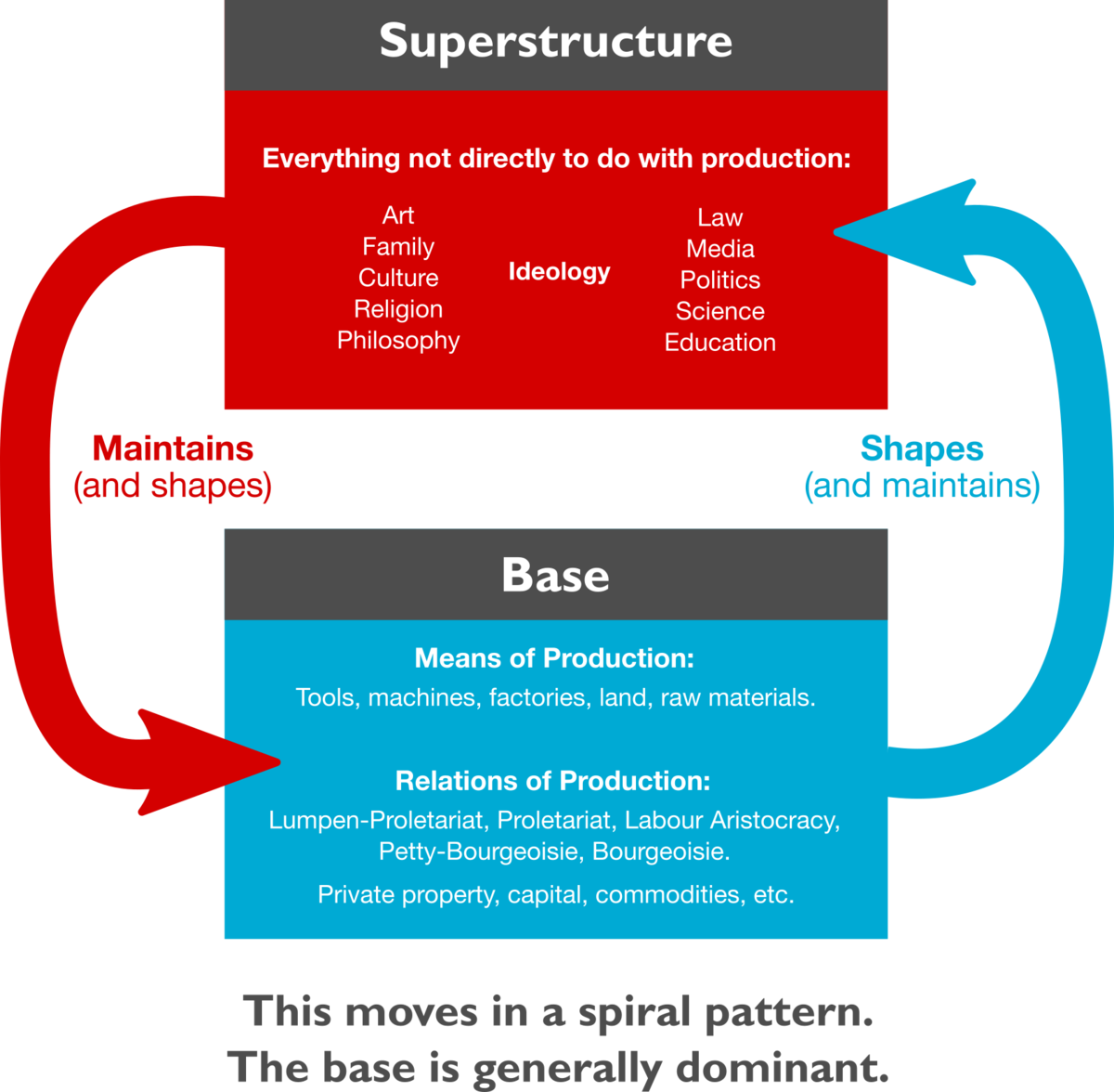
Ł La thèse de Max Weber A) Une sociologie de l’action L’analyse des actions des individus en société constitue bien le cœur de la théorie de Max Weber. Weber définit une action sociale comme un comportement volontaire dirigé vers autrui. Les sociologues, aujourd’hui, parlent « d’interactions ». Ł La thèse de Max Weber A) Une sociologie de l’action L’analyse des actions des individus en société constitue bien le cœur de la théorie de Max Weber. Weber définit une action sociale comme un comportement volontaire dirigé vers autrui. Les sociologues, aujourd’hui, parlent « d’interactions ».


